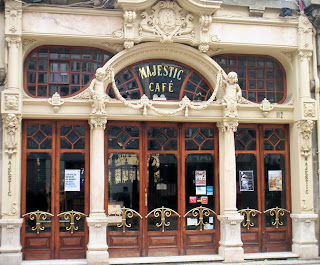Books are much more than words on printed paper in
John Latham's work. Submitted to various demolishing processes, books come to signify the compounding of scientific, philosophical, political and religious ideas that articulate the world we live in, and by extension, our
selves.
Latham Cluster 11 (1992)
Film Star (1960)
The Burial of Count Orgaz (1958)
Five Sisters Bing (1976)
God is Great 1 (1989)
Though dismissed by some critics as anarchic, Latham's use of books helps us reflect on the way culture has shaped and framed existence and how this frame can be changed by submitting meaning to what he calls an "
event", an elusive present: life at its purest, which can neither be framed or shaped by culture, but which nevertheless guarantees questioning and change.
Art and Culture (1966-69)
Art and Culture was Latham's most radical subversion of the idea of books and artworks as dead objects. This piece is a materialozation of art as action: In 1966, Latham borrowed a copy of
Clement Greenberg's Art and Culture — a work that held something of a cult status at that time — from the library of Saint Martin's School of Art, where Latham was employed as a part-time lecturer. At a party Latham invited students to chew pages from the book, and then distilled the resulting pulp into a clear liquid. This process took several months, and Latham began to receive letters from the library demanding its return. Latham presented a vial of the fermented book-pulp to the library, but this was rejected and his teaching contract was not renewed. The vial and correspondence became an artwork of its own, displayed in a leather case; the piece is now in the collection of the
Museum of Modern Art in New York.
For more detailed information, read an
1987 interview to Latham, "Books for Burning" here:
http://www.artdesigncafe.com/Lisson-Gallery-John-Latham-John-A-Walker-2











